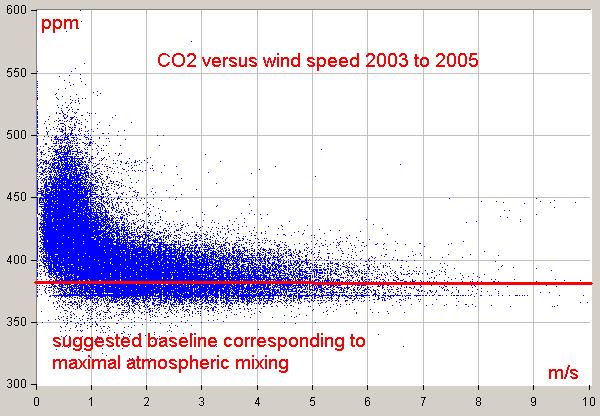What was it like the last time CO2 levels were this high?
Posted on 16 April 2011 by John Cook
A vivid picture of our climate's future can be found in our past. Currently, atmospheric carbon dioxide (CO2) levels have reached 390 parts per million (ppm). The last time CO2 was that high was around 3 million years ago, during the Pliocene. Back then, CO2 levels remained at around 365 to 410 ppm for thousands of years. Consequently, the Pliocene gives us vital clues of the long-term effects of raised CO2 levels. New research has just been published that examines this period and confirms previous findings that the Pliocene was dramatically warmer than current temperatures.
The research, published in Csank et al 2011, uses two independent methods to measure Arctic temperature during the Pliocene, on Ellesmere Island. They find that Arctic temperatures were 11 to 16°C warmer (Csank 2011). This is consistent with other independent estimates of Arctic temperature at the time. Global temperatures over this period is estimated to be 3 to 4°C warmer than pre-industrial temperatures. Sea levels were around 25 metres higher than current sea level (Dwyer 2008).
This tells us our climate is sensitive to changes in CO2. If we were to stabilise CO2 levels at around 400 ppm, we'd expect over the long-term a further warming of 2 to 3°C, which is significantly greater than the warming predicted by climate models. This is because climate models only include short-term feedbacks, such as increased water vapor and melting of sea ice. They are yet to take into account the long-term feedbacks from the melting of ice sheets and vegetation changes.
This also tells us that ice sheets are sensitive to sustained warmer temperatures. The Greenland and Antarctic ice sheets lost significant amounts of ice during these warmer temperatures. This sensitivity is apparent in current observations, with both Greenland and Antarctica losing ice at an accelerating rate.
The ice loss is particularly dramatic in Greenland. Two decades ago, the Greenland ice sheet was in approximate balance - ice loss at the edges as glaciers calved into the ocean was balanced by ice gain in the interior from increased snowfall. One decade ago, the ice loss at the edges had increased and Greenland was losing around 100 billion tonnes of ice every year. Currently, this ice loss has increased to around 300 billion tonnes of ice per year.
Earth's past history is sending us a strong message - current CO2 levels are not safe. This is echoed by movements like 350.org who tell us we need to stabilise CO2 levels at 350 parts per million. That means dramatically reducing carbon emissions and looking for ways to remove CO2 from the atmosphere or we may eventually face the potentially catastrophic conditions of the Pliocene once more.































 Arguments
Arguments
























 0
0  0
0
 The problem with the CO2 measurements you claim to have been thrown out is that they are known to have been located near or in major sources of CO2 such as towns, industrial plants, roads and forests. Forests are interesting because during the day trees draw CO2 from the atmosphere, diluting it, while at night they add CO2 to the atmosphere. That pattern can be clearly seen in CO2 measurements from forests, although it is weaker the higher the wind speed.
Contrary to your claim, CO2 measurements from ice cores are not measurements of a proxy, but of atmospheric CO2 trapped in ice bubbles. There are no trees or factories in the antarctic, so no contamination. Hence the measurements are accurate.
So, why should we take contaminated measurements with no quality control (as Beck does) over uncontaminated measurements?
The problem with the CO2 measurements you claim to have been thrown out is that they are known to have been located near or in major sources of CO2 such as towns, industrial plants, roads and forests. Forests are interesting because during the day trees draw CO2 from the atmosphere, diluting it, while at night they add CO2 to the atmosphere. That pattern can be clearly seen in CO2 measurements from forests, although it is weaker the higher the wind speed.
Contrary to your claim, CO2 measurements from ice cores are not measurements of a proxy, but of atmospheric CO2 trapped in ice bubbles. There are no trees or factories in the antarctic, so no contamination. Hence the measurements are accurate.
So, why should we take contaminated measurements with no quality control (as Beck does) over uncontaminated measurements?









Comments